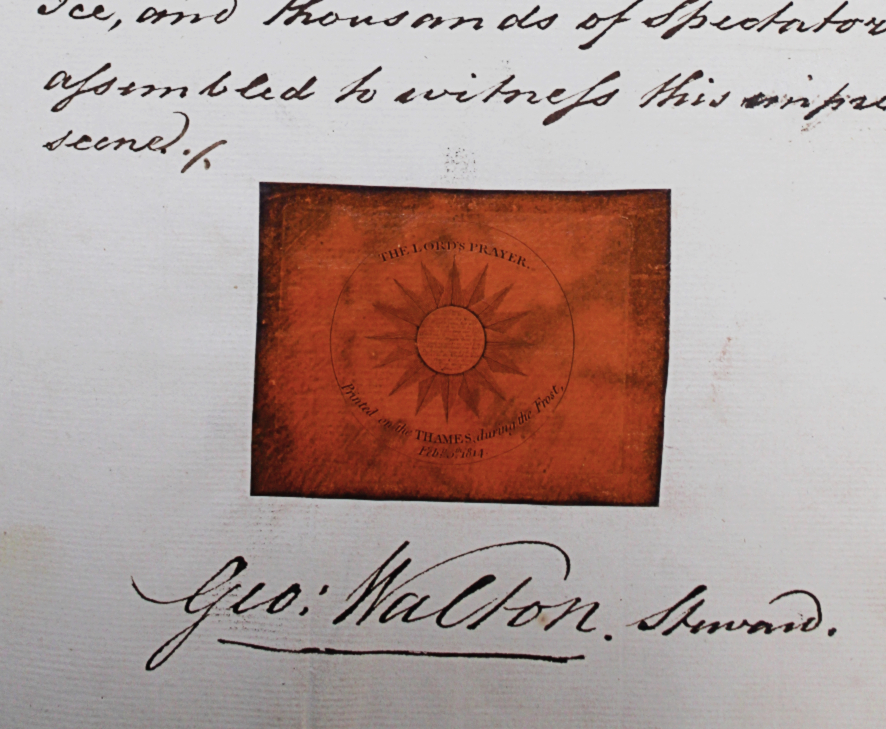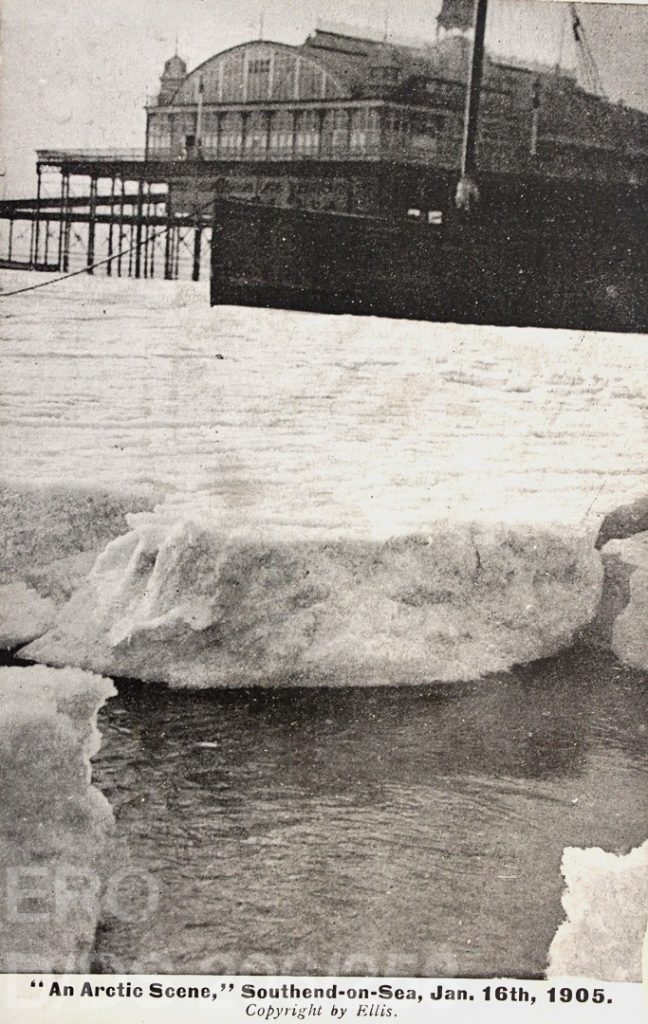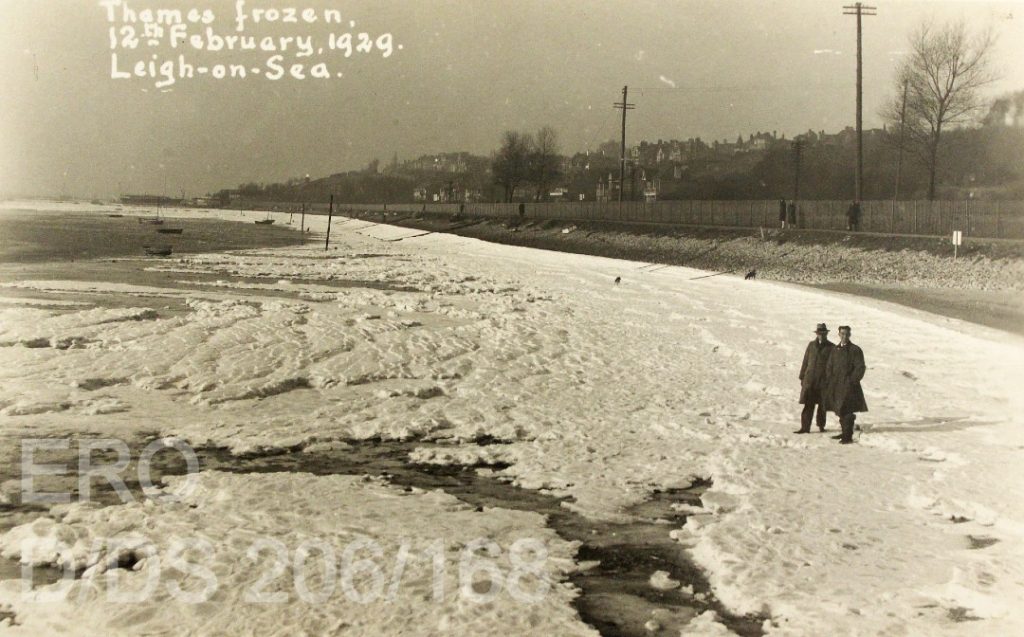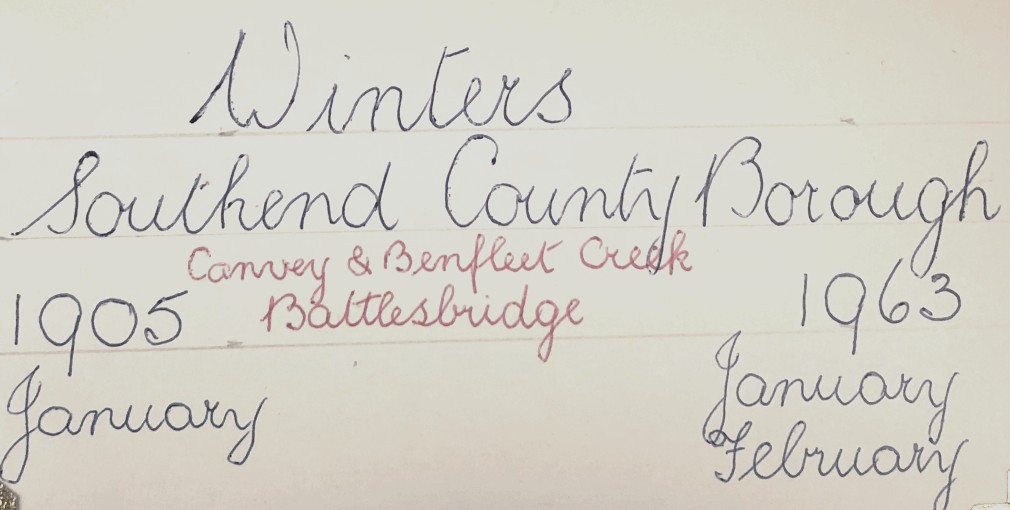Hidden at the back of an otherwise innocuous court book from Ashdon Rectory is this unimposing memento of ‘an unprecedented scene’ which took place between December 26th 1813 and March 20th 1814 when the surface of the River Thames in London froze fully solid. As with numerous such occasions before this the locals of London contrived to hold an awe-inspiring ‘Frost Fair’ upon the frozen surface. This small copy of the Lord’s Prayer was printed on the Thames itself on February 5th 1814.

(D/DU 153/4)
Such mementos were not uncommon; when Charles II visited a frost fair on January 31st 1684 he bought a printed ticket to commemorate the occasion. Held at the Museum of London, the ticket lists the members of the court who attended alongside the King. The very first documented frost fair took place even earlier than this in 1608, where one could even get a shave in the middle of the frozen river. The fairs were filled with the novelty of such everyday tasks being performed on the ice. Vendors set up funfair games, fortune telling, and stalls selling all variety of food, drink, and trinkets.
Unfortunately, the frost fair immortalised in the Ashdon Rectory court book was the last of its kind. The demolition of the medieval London Bridge in 1831, and other changes to the Thames made during the Victorian era, altered the flow of the river so that the water was deeper and swifter and did not freeze so easily.

However, there is further evidence of smaller freezes which affected the rivers in Essex as late as the 20th century. Rivers in Southend, Leigh-on-Sea and Rochford froze to dramatic spectacle in both 1905 and 1929.

Although the ice was thick enough to walk on no frost fairs were held during these smaller freezes and, looking at these photographs, we can see why no one would want to risk ice-skating on these unruly frozen waves!
An even more recent example occurred in 1963 and presented such an inhospitable scene in Southend, Benfleet, and Battlesbridge that G.A. Robinson was moved to dedicate a whole scrapbook to the icy scenes.

Nowadays ice is found mostly on our car windscreens, making it difficult to picture such monumental scenes for ourselves. If you need more photographic evidence to fully comprehend these extreme conditions, make sure to check out our latest Curiosity Cabinet in the Searchroom.
